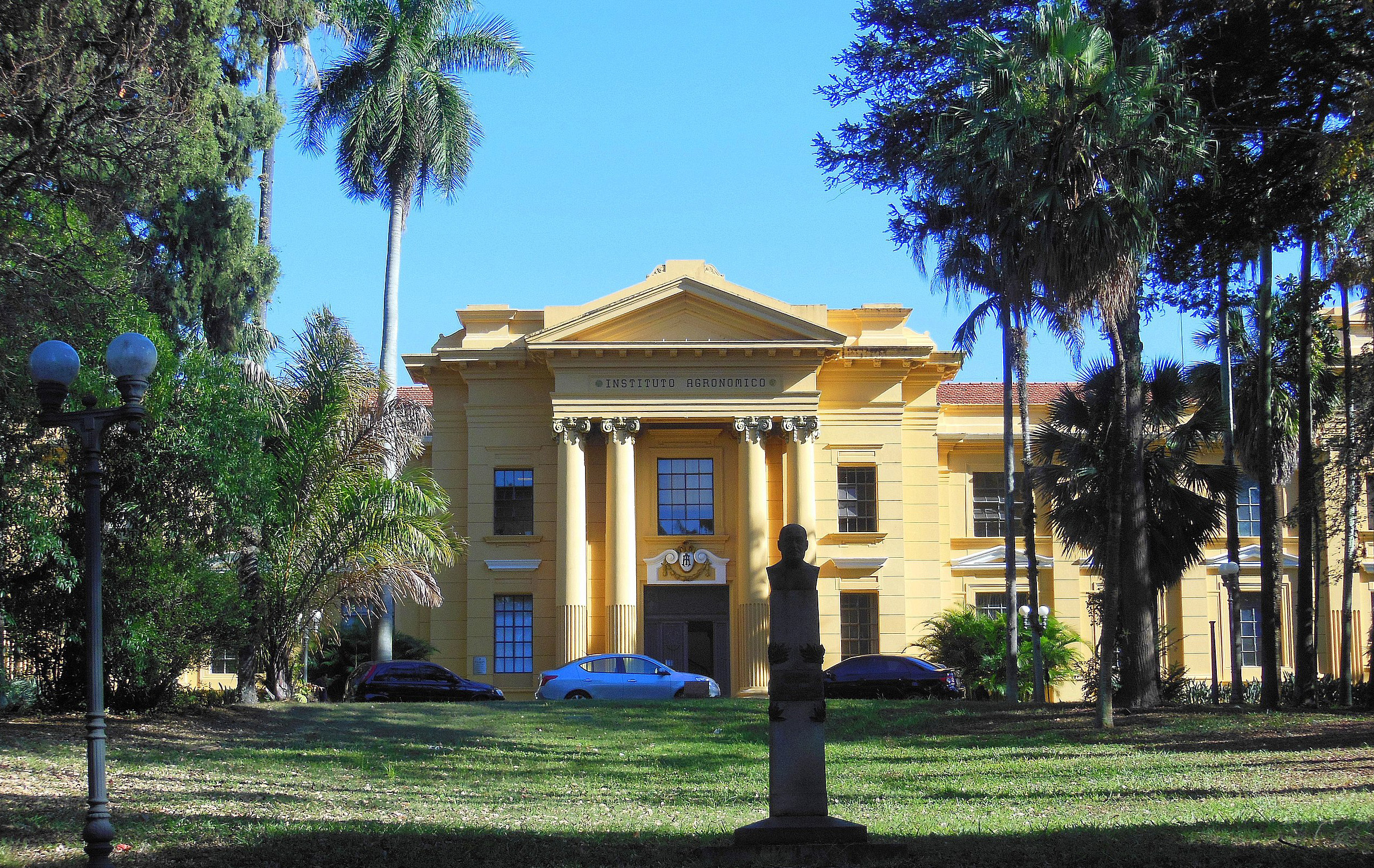
Coffee History in Brazil
Coffee was brought to Brazil from French Guiana in the 18th century (more precisely in 1727). It started in the North and quickly spread along the coasts. Back then, sugar cane was Brazil’s biggest crop and the main contributor to Brazil’s economy. When the Caribbean sugar production boomed, Brazil was unable to compete with their prices so production declined sharply. Brazil then decided to shift its focus to coffee production to attend the global demand. By 1820, coffee became Brazil’s most exported product. By 1840 Brazil had become the largest coffee exporter in the world.
And in this growing period of almost 300 years, several planting and genetic improvement techniques were developed to increase both resistance to pests and productivity.
IAC - Instituto Agronomico de Campinas, created in 1887 by the emperor Dom Pedro II, has been contributing for the coffee planting development since its foundation.
And in this growing period of almost 300 years, several planting and genetic improvement techniques were developed to increase both resistance to pests and productivity.
IAC - Instituto Agronomico de Campinas, created in 1887 by the emperor Dom Pedro II, has been contributing for the coffee planting development since its foundation.
The IAC (Instituto Agronômico de Campinas, or Agronomical Institute of Campinas) is a research and development institution affiliated to the Sao Paulo Agency of Agrobusiness Technology, a part of the Secretary of Agriculture of Sao Paulo state, with headquarters in the city of Campinas.
Campinas is a Brazilian municipality in Sao Paulo State, located at 100km from Sao Paulo city. The city's population is 1,194,094 (as of 2010), making it the fourteenth most populous Brazilian city and the third most populous municipality in Sao Paulo state.
Campinas is a Brazilian municipality in Sao Paulo State, located at 100km from Sao Paulo city. The city's population is 1,194,094 (as of 2010), making it the fourteenth most populous Brazilian city and the third most populous municipality in Sao Paulo state.
The IAC is the oldest institution of its kind in Latin America, having been founded by Emperor Dom Pedro II in 1887 as the Imperial Agronomical Station of Campinas. In 1892 it was transferred to the state government. IAC's mission is to research, generate and transfer science and technology devoted to agriculture and related applied fields, with the aim of optimizing plant production, sustainable socio-economic development and environmental quality.
Jade Coffee has selected some of the best coffees grown in Brazil, including four very special cultivars: Mundo Novo, Yellow Catucaí, Topázio and Catiguá - all incredibly tasty and very sought after in Brazil, but hard to find in Asia. Let's explore them!
Jade Coffee has selected some of the best coffees grown in Brazil, including four very special cultivars: Mundo Novo, Yellow Catucaí, Topázio and Catiguá - all incredibly tasty and very sought after in Brazil, but hard to find in Asia. Let's explore them!
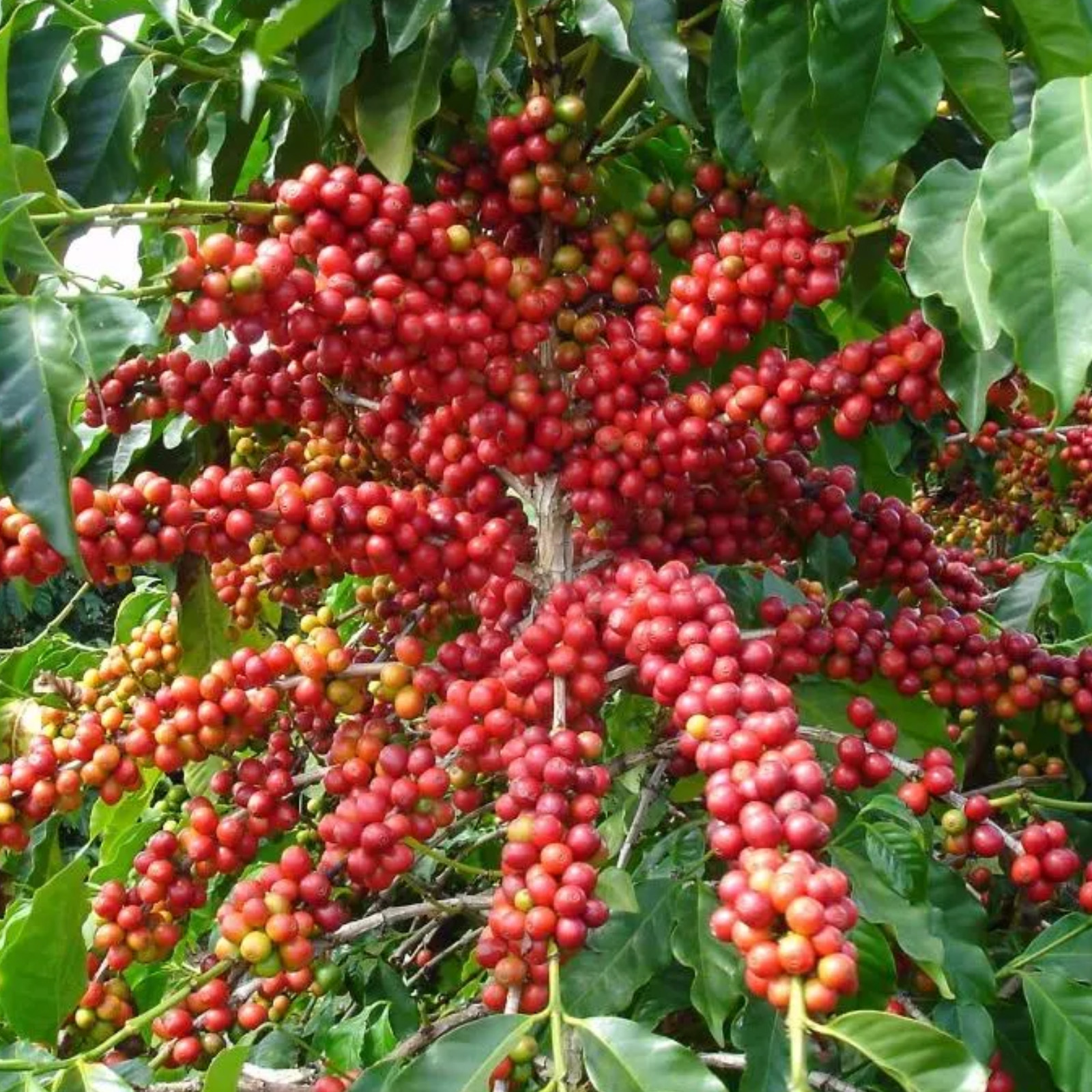
Mundo Novo = Sumatra (Typica) + Red Bourbon
Mundo Novo is a natural cross between SUMATRA and RED BOURBON, found in the Sao Paulo municipality of Mineiros do Tietê. Seeds from one of these trees were planted in the municipality of Mundo Novo, now called Urupês, where the plant arrays that gave origin to the cultivar Mundo Novo were selected.
There, between 1943 and 1952, various plant arrays were selected and later further selections between the offsprings were made to eliminate defects. The selected offsprings, then called Mundo Novo, were then propagated and distributed to farmers beginning in 1952.
New selections were released from IAC in 1977.
Production Capacity:
- No irrigation: 25 to 35 bags (60kg) (per hectare)
- With irrigation: up to 60 bags (60kg)
Tasting Notes: red fruits, medium body and sweetness, light acidity
Mundo Novo is a natural cross between SUMATRA and RED BOURBON, found in the Sao Paulo municipality of Mineiros do Tietê. Seeds from one of these trees were planted in the municipality of Mundo Novo, now called Urupês, where the plant arrays that gave origin to the cultivar Mundo Novo were selected.
There, between 1943 and 1952, various plant arrays were selected and later further selections between the offsprings were made to eliminate defects. The selected offsprings, then called Mundo Novo, were then propagated and distributed to farmers beginning in 1952.
New selections were released from IAC in 1977.
Production Capacity:
- No irrigation: 25 to 35 bags (60kg) (per hectare)
- With irrigation: up to 60 bags (60kg)
Tasting Notes: red fruits, medium body and sweetness, light acidity
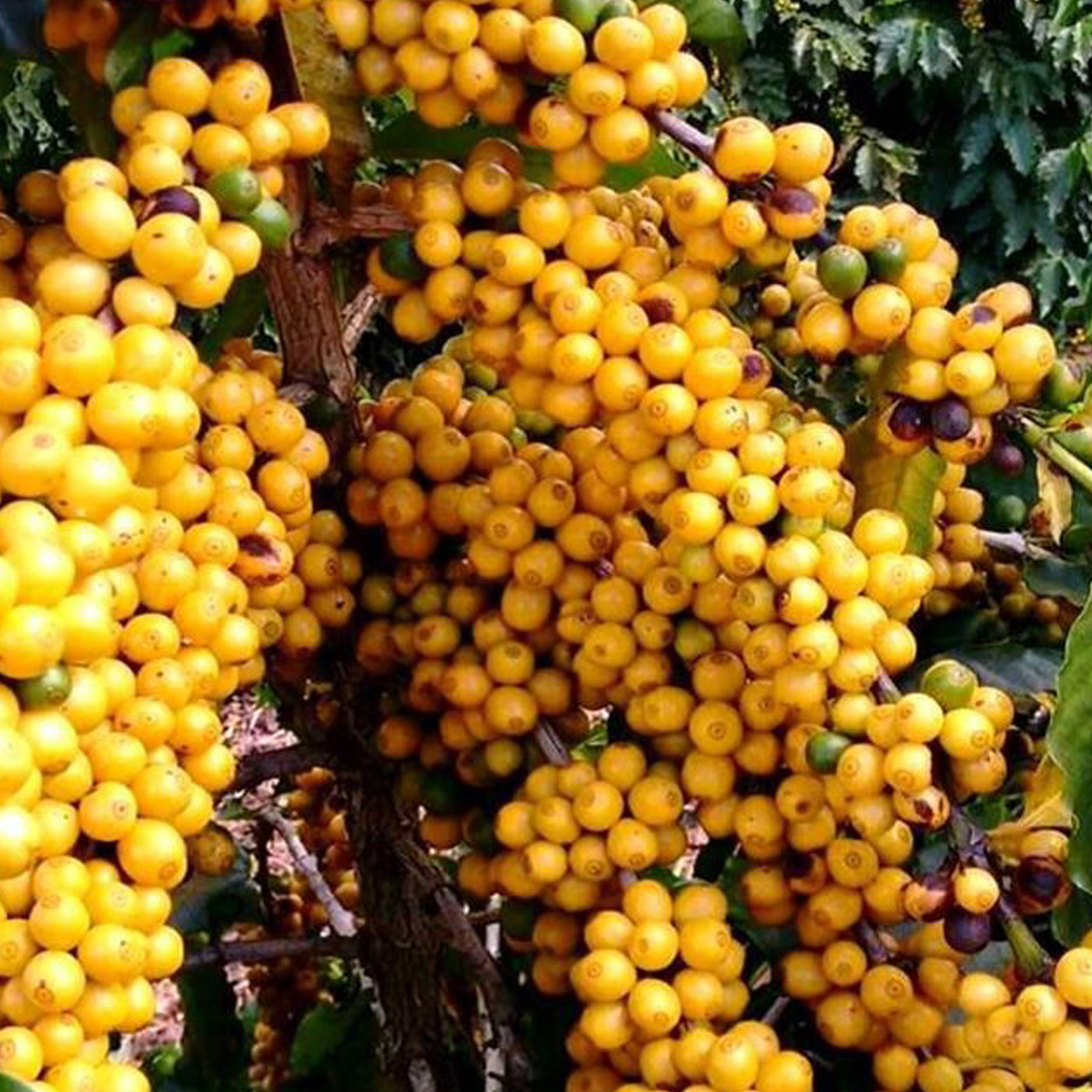
Yellow Catucaí = Icatú + Catuaí
Catucaí was developed as a cross between Icatú and Catuaí. The first selection was made in 1988 by researchers at former Brazilian Coffee Institute (IBC) in a population of the Red Icatú cultivar, whose seeds came from Londrina and had been planted in the municipality of São José do Vale do Rio Preto, Rio de Janeiro.
Progenies of these selections were planted and selected at the Fazenda Experimental de Varginha, MG, belonging to the MAPA / Procafé Foundation. After careful breeding, later generations were selected in the municipalities of Varginha, Elói Mendes, Manhuaçu, Coromandel and Patrocínio, in Minas Gerais; Vitória da Conquista, in Bahia and Marechal Floriano, in the state of Espírito Santo, to select plants that were very productive, with high vegetative vigor and resistant to coffee rust.
Tasting Notes: light honey flavor combined with fennel and yellow fruits aromas, comfortable acidity
Catucaí was developed as a cross between Icatú and Catuaí. The first selection was made in 1988 by researchers at former Brazilian Coffee Institute (IBC) in a population of the Red Icatú cultivar, whose seeds came from Londrina and had been planted in the municipality of São José do Vale do Rio Preto, Rio de Janeiro.
Progenies of these selections were planted and selected at the Fazenda Experimental de Varginha, MG, belonging to the MAPA / Procafé Foundation. After careful breeding, later generations were selected in the municipalities of Varginha, Elói Mendes, Manhuaçu, Coromandel and Patrocínio, in Minas Gerais; Vitória da Conquista, in Bahia and Marechal Floriano, in the state of Espírito Santo, to select plants that were very productive, with high vegetative vigor and resistant to coffee rust.
Tasting Notes: light honey flavor combined with fennel and yellow fruits aromas, comfortable acidity
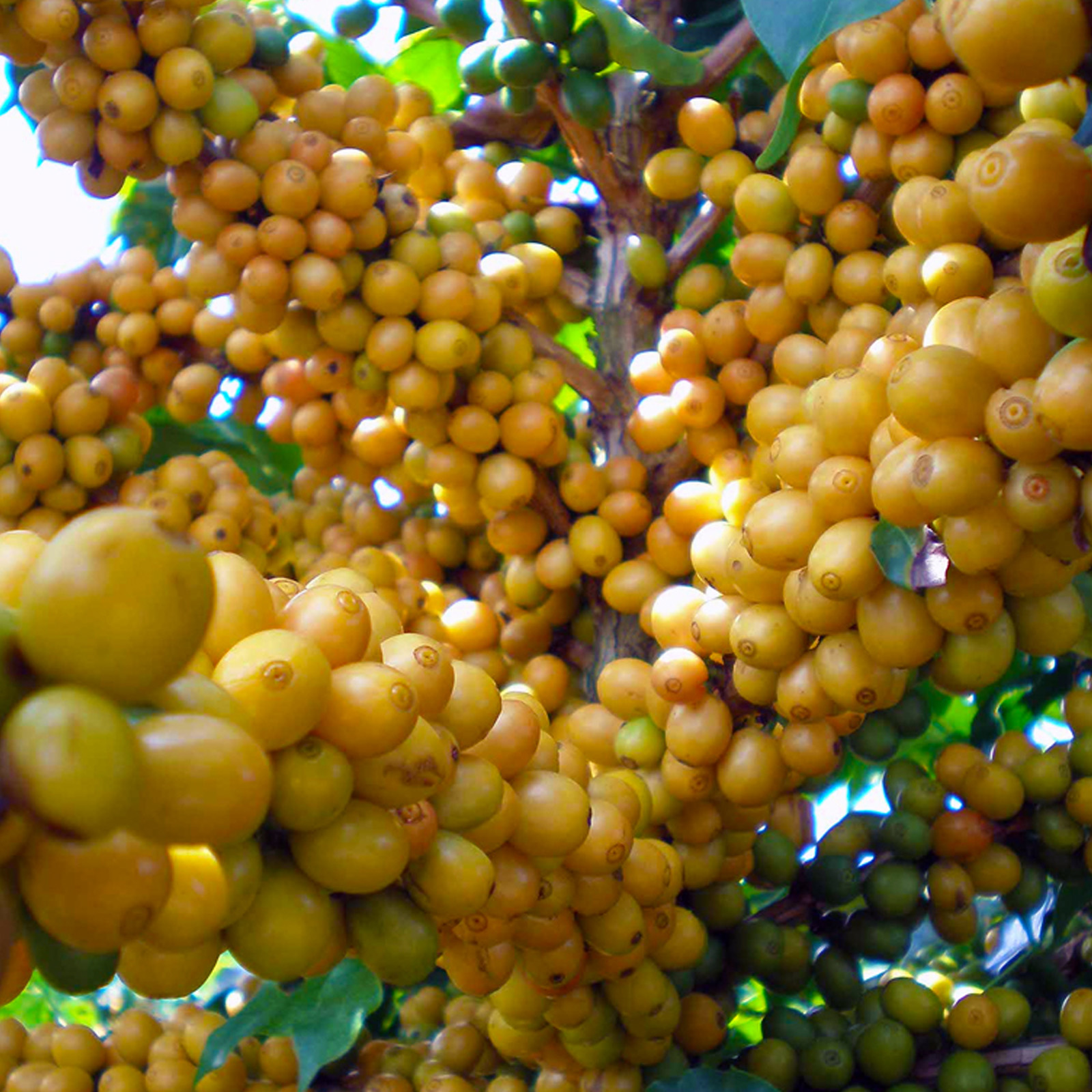
Topázio = Mundo Novo + Yellow Catuaí
Topázio is a cross between Mundo Novo and Yellow Catuaí, first selected at IAC in the 1960’s and later intensified by the state research organization EPAMIG in Minas Gerais and 2 universities: UFLA (Universidade Federal de Lavras) and UFV (Universidade Federal de Viçosa). The trees have a low, relatively compact stature but are not resistant to diseases. Cherries ripen to deep yellow, inspiring its name indicative of the yellow gemstone. The Topázio cultivar is especially well suited to the climate of Minas Gerais and does well at high densities and as part of irrigated plantation.
Tasting Notes: Good body, smooth mouth feel, light lemon scent, rich aroma. This cultivar is commonly used in Brazil for iced coffee cocktails.
Topázio is a cross between Mundo Novo and Yellow Catuaí, first selected at IAC in the 1960’s and later intensified by the state research organization EPAMIG in Minas Gerais and 2 universities: UFLA (Universidade Federal de Lavras) and UFV (Universidade Federal de Viçosa). The trees have a low, relatively compact stature but are not resistant to diseases. Cherries ripen to deep yellow, inspiring its name indicative of the yellow gemstone. The Topázio cultivar is especially well suited to the climate of Minas Gerais and does well at high densities and as part of irrigated plantation.
Tasting Notes: Good body, smooth mouth feel, light lemon scent, rich aroma. This cultivar is commonly used in Brazil for iced coffee cocktails.
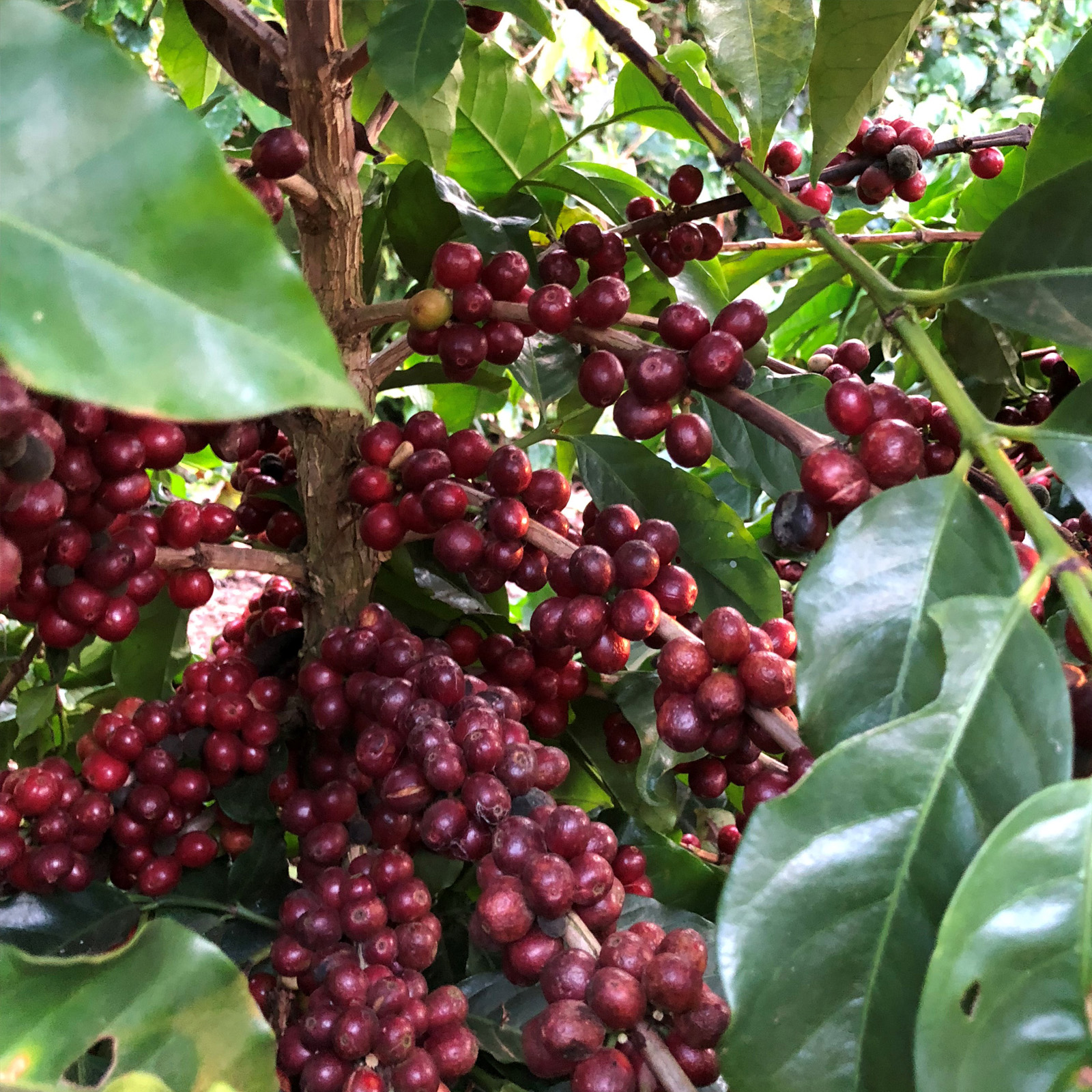
Catiguá = Timor (Hybrid) + Yellow Catuaí
In 1980, a team of plant breeders at two Brazilian research institutions (EPAMIG – Empresa de Pesquisa Agropecuária de Minas Gerais) and UFV - Universidade Federal de Viçosa) made a cross between Yellow Catuai (IAC 86) and the Timor Hybrid (UFV 440-10) carrier of rust resistance. Later generations were tested at several field Brazil and found to be successful. The name Catiguá refers to the original name of the city of Patrocínio, Minas Gerais, where part of the selection process of this cultivar was carried out.
Tasting Notes: Catigua has been highlighted by expert tasters of different associations of "Specialty Coffee" in Brazil as a coffee that has "very good acidity, citrus and exotic floral flavors, very good sweetness, it is complex and wonderful" qualities much appreciated by consumers of specialty coffees.
In 1980, a team of plant breeders at two Brazilian research institutions (EPAMIG – Empresa de Pesquisa Agropecuária de Minas Gerais) and UFV - Universidade Federal de Viçosa) made a cross between Yellow Catuai (IAC 86) and the Timor Hybrid (UFV 440-10) carrier of rust resistance. Later generations were tested at several field Brazil and found to be successful. The name Catiguá refers to the original name of the city of Patrocínio, Minas Gerais, where part of the selection process of this cultivar was carried out.
Tasting Notes: Catigua has been highlighted by expert tasters of different associations of "Specialty Coffee" in Brazil as a coffee that has "very good acidity, citrus and exotic floral flavors, very good sweetness, it is complex and wonderful" qualities much appreciated by consumers of specialty coffees.
